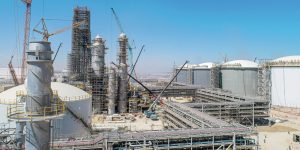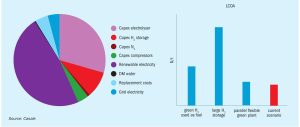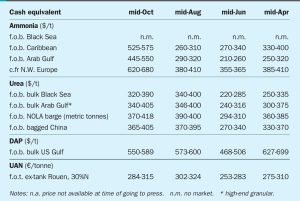
The merchant ammonia market
Merchant markets for ammonia have faced considerable disruption in recent years due to the covid pandemic and the war in Ukraine.

Merchant markets for ammonia have faced considerable disruption in recent years due to the covid pandemic and the war in Ukraine.

With the current focus on decarbonising ammonia production, Johnson Matthey explains the important role of high activity ammonia synthesis catalyst in the production of green ammonia.

It is common knowledge that wet CO₂ is corrosive to carbon steel and “dry” CO₂ is not corrosive to carbon steel. So typically engineers and contractors choose carbon steel for dry CO₂ conditions and stainless steels for wet CO₂ conditions. This can be seen in the CO₂ feed section of almost every older urea plant. But is it true that carbon steel is always the right choice for dry CO₂ and is dry CO₂ really dry under all circumstances?

TOYO has a long history in urea granulation technologies and has recently added two new technologies to its product line-up.

While producing ammonia with hydrogen from electrolysis remains expensive, large scale lower carbon ammonia has focused on carbon capture and storage from existing plants, so-called ‘blue’ ammonia. But exactly how green is blue?

Casale presents different scenarios based on energy availability for the integration of an existing ammonia facility with green hydrogen to supplement or replace the grey ammonia production with green ammonia.

Market Insight courtesy of Argus Media